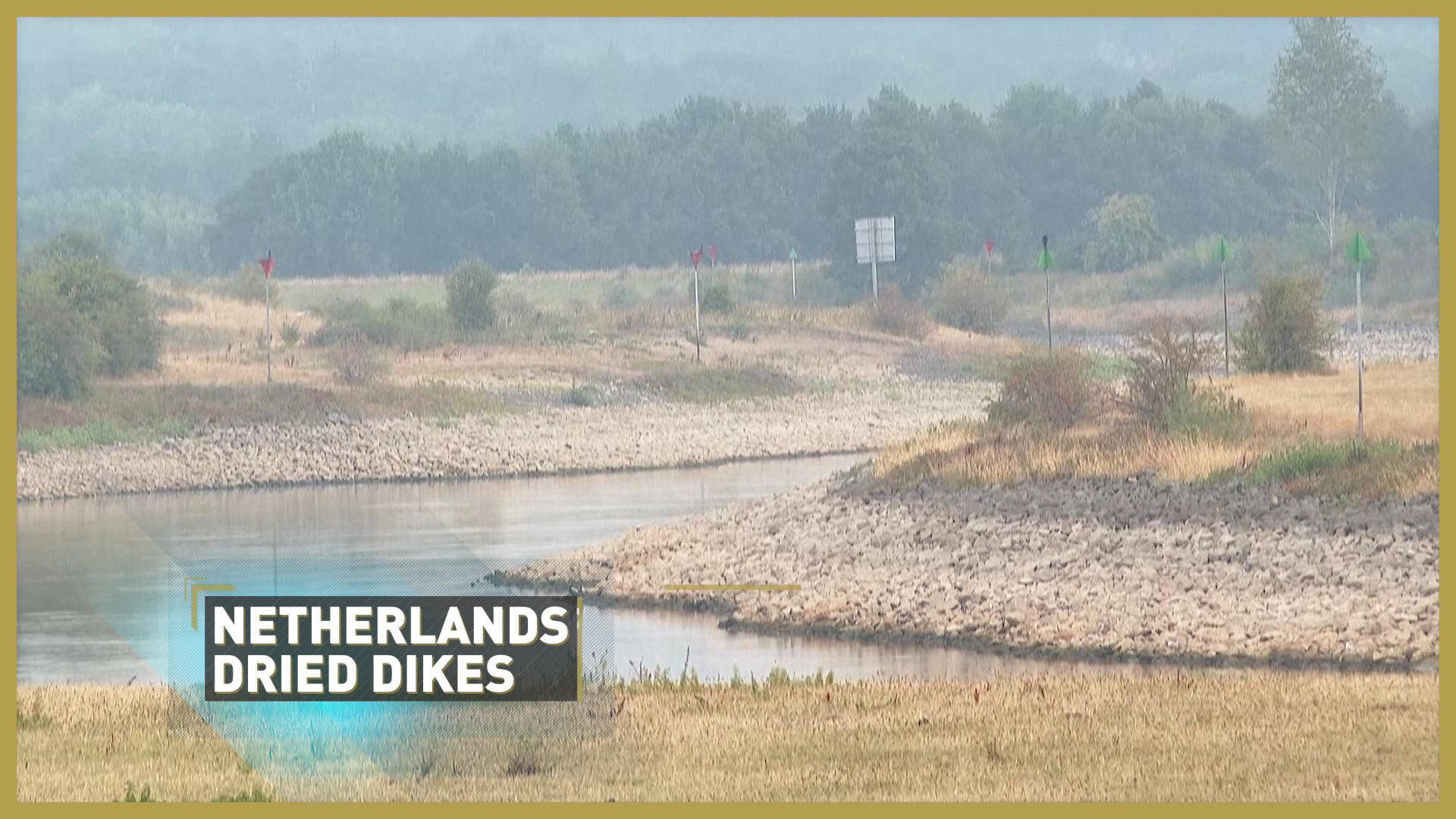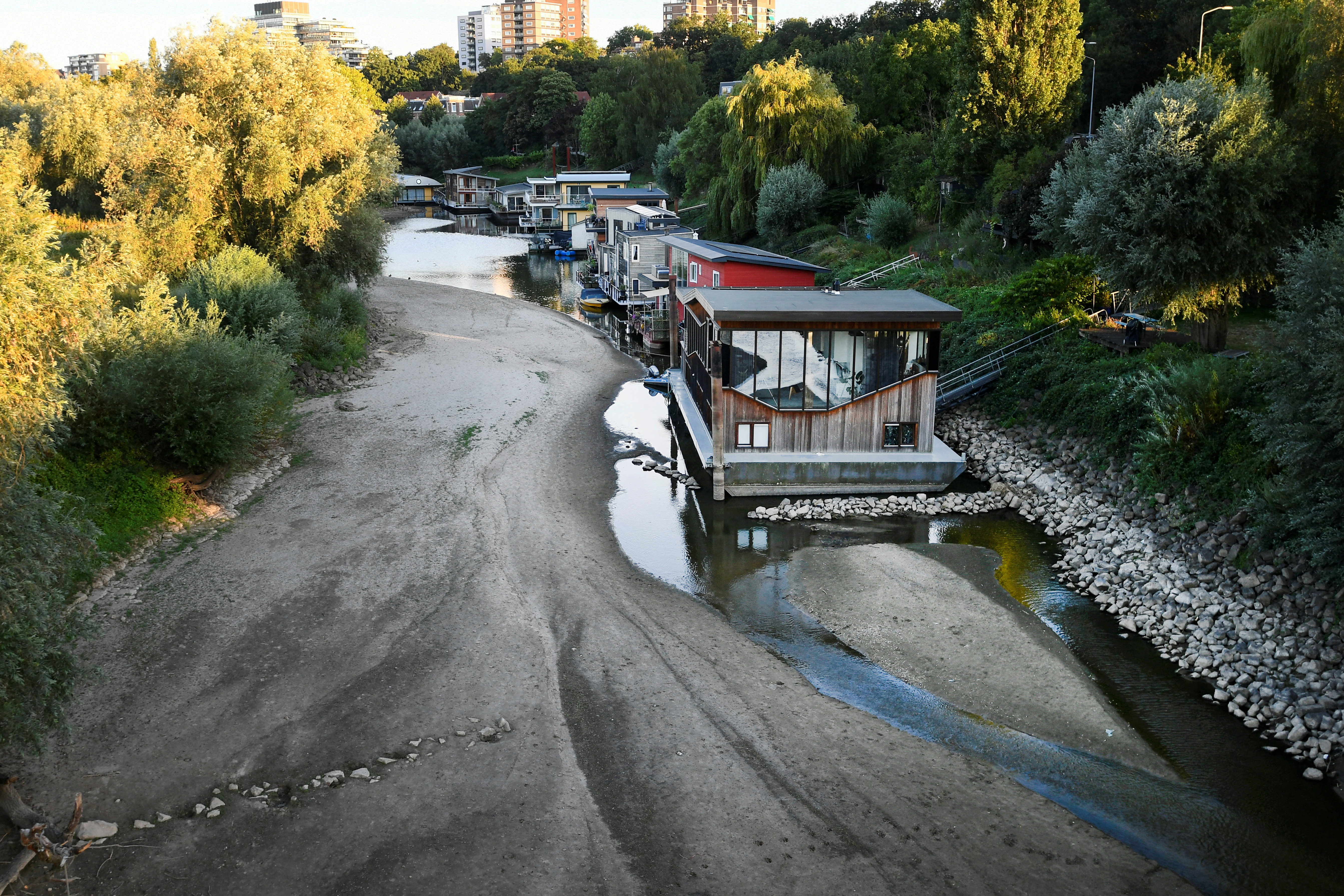02:03

Authorities in the Netherlands are on high alert as drought conditions could threaten the stability of the country's network of 19th century peat dikes.
The land of water is experiencing one the driest summers of the past 100 years, with experts warning that sustained heat in the coming weeks could make this the driest year on record.
The drought has caused problems for Dutch shipping, with low water levels threatening to make the Rhine river impassable for cargo barges while fishermen in the east of the country coordinate teams of volunteers to rescue schools of fish trapped in drying rivers.
Even the Netherlands' world-renowned water management system is feeling the heat. Part of the country's 22,000 kilometers network of dikes is made up of smaller "regional" dikes, made of peat, which tend to protect lower risk areas like forests and fields.
"They need water to maintain their stability and with the drought right now, they are becoming more dry which can eventually lead to damage," said Jane Alblas, spokesperson for the Dutch Water Board, adding that "one of the problems we face is that they can burst when they're too dry."
Alblas also added that the country's water management system is being pushed to its limits: "We as water managers are reaching the limits of what we can do in our system so we really want to work with the national government to look at the broader picture."

House boats perched on a drying side channel of the Waal River due to drought in Nijmegen, Netherlands August 2022. Reuters/Piroschka van de Wouw
House boats perched on a drying side channel of the Waal River due to drought in Nijmegen, Netherlands August 2022. Reuters/Piroschka van de Wouw
These dikes, many dating back to the 19th century, need a certain level of humidity to maintain their structural integrity. Sustained hot and dry weather could lead to these water defenses drying out and, in extreme cases, collapsing altogether.
As was the case in the idyllic Dutch town of Wilnis in 2003. In the early hours of the morning, a peat dike, which banked the canal that flows through the town, collapsed over 60 meters, flooding the residential areas nearby and forcing some 2,000 people to evacuate their homes.
The breach in Wilnis was caused by a combination of dry temperatures and poor maintenance and authorities say that lessons have been learned from the accident.
André Koelewijn, an expert in Dike technology for Deltares, a Dutch water technology company, explains that "this summer is pretty dry, it's in the top five driest summers in the last hundred years. For peat dikes, it's even a bit worse, because peat is organic material which you lose over time - so even if it's not as dry as it has been before, but just almost as bad, then because of the loss of material, it can result in a serious situation."
Although this summer's heatwaves and drought have threatened to create lasting damage to the country's water management infrastructure, authorities in the Netherlands appear to have the current situation under control.
However, they remain concerned about the impact of climate change in years to come.

